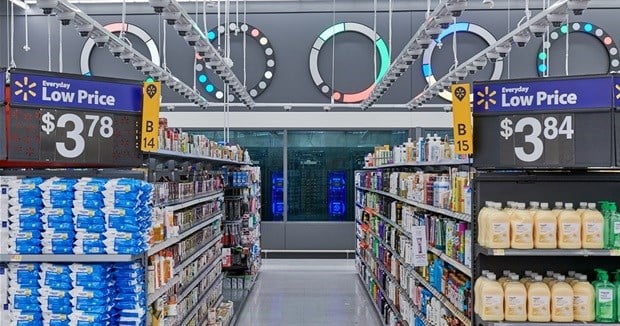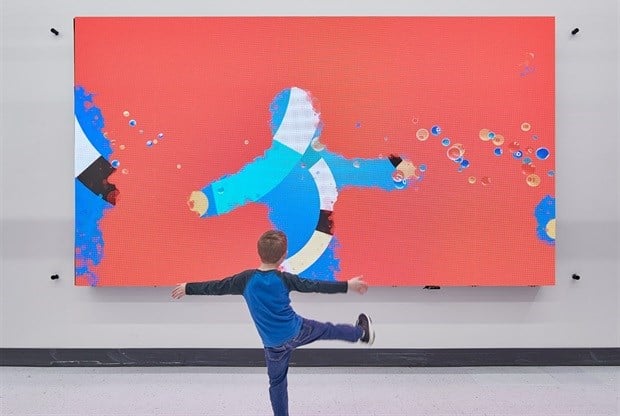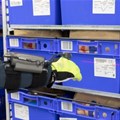IRL: AI powers Walmart's store of the future
Over the past few months, a Walmart Neighborhood Market in New York has quietly transformed into the company's first Intelligent Retail Lab (IRL). With artificial intelligence-enabled cameras, interactive displays and a massive data center, this store suggests the company's vision for its store of the future.

According to the retailer, IRL is designed to be a unique real-world shopping environment designed to explore the possibilities artificial intelligence can contribute to the store experience.
Walmart’s tech incubator Store No 8 has positioned the store within one of the company’s busiest locations, where it can test new ideas within a real store containing over 30,000 items.
“We’ve got 50,000 square feet of real retail space. The scope of what we can do operationally is so exciting,” says Mike Hanrahan, CEO of IRL. “Technology enables us to understand so much more – in real time – about our business. When you combine all the information we’re gathering in IRL with Walmart’s 50-plus years of expertise in running stores, you can create really powerful experiences that improve the lives of both our customers and associates.”
AI for inventory management
IRL is set up to gather information about what’s happening inside the store through an array of sensors, cameras and processors. This hardware is said to be connected by enough cabling to scale Mt. Everest five times and enough processing power to download three years’ worth of music (27,000 hours) each second.
According to Hanrahan, the first thing this equipment will help the team focus on is product inventory and availability. In short, the team will use real-time information to explore efficiencies that will allow associates to know more precisely when to restock products, so items are available on shelves when they’re needed.

As an example: When you go shopping for the week, you want the products you buy to be in stock when you get to the store. In IRL, a combination of cameras and real-time analytics will automatically trigger out-of-stock notifications to internal apps that alert associates when to re-stock.
This means the store has to automatically:
• Detect the product on the shelf
• Recognise the specific product (meaning, decipher the differences between 1kg of ground beef and 2kg's of ground beef)
• Compare the quantities on the shelf to the upcoming sales demand
The result is that associates won’t have to continually comb the store to replace products running low on the shelves. They’ll know what to bring out of the back room before customers show up.
Data-gathering mode
Walmart says IRL will be in data-gathering mode in its early days. The focus will be on learning from the technology and not implementing changes to operations in haste.
“You can’t be overly enamored with the shiny object element of AI,” Hanrahan cautioned. “There are a lot of shiny objects out there that are doing things we think are unrealistic to scale and probably, long-term, not beneficial for the consumer.”
Before jumping to more futuristic concepts, the IRL team is starting with practical solutions like the meat inventory example as well as others like making sure shopping carts are available and registers are open.
The IRL experience
Walking into IRL for the first time, there are a lot of the staples you’d expect in a Walmart Neighborhood Market: associates, cash registers and shelves with thousands of products. There are also new features like a glass-encased data centre bathed in a blue glow.

Walmart acknowledges that the idea of a live shopping environment raises questions about all the visible technology. This was a key consideration for the team while designing IRL, and the store includes multiple information stations for customers to visit to understand exactly how AI makes the store tick.
As customers shop, they can interact with a number of educational displays. Small educational kiosks are interspersed throughout the store. A Welcome Centre at the front end allows customers to dive deeper into technical specifications and common questions.
Just outside the data centre where the servers are housed, flanking the plexiglass windows, are two large displays – one of which encourages participants to move around and learn how technology reacts to body positioning. The interactive wall is meant to be a fun demonstration of how AI can estimate body positioning.

Working in IRL
Among the customers who’ll be absorbing knowledge, IRL’s more than 100 associates will be undertaking retail experiments every day. With technology performing mundane tasks like evaluating if shopping carts need to be corralled, associates will be able to spend more time on tasks humans can do best, such as helping customers or adding creative touches to merchandise displays.
“The technology has been built to improve associates’ jobs, to make their jobs more interesting, to help them alleviate some of the mundane tasks. AI can enhance their skill set in a very rapidly changing world.”


